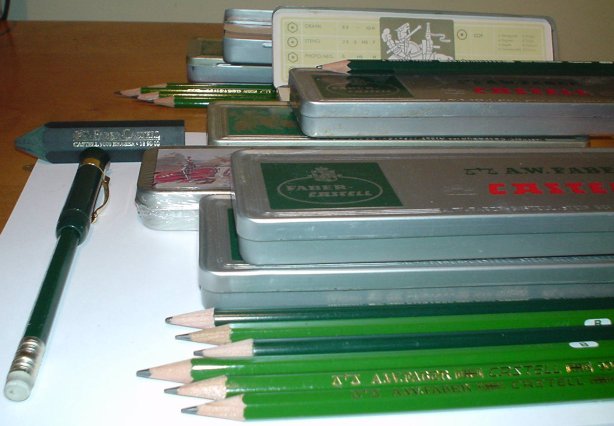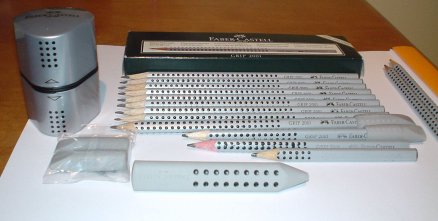
A problem I have with many mechanical pencils is the scrawny lead. At five or seven tenths of a millimetre in diameter, many of these leads are prone to breaking. And when they break, they can go flying. This type of lead doesn’t allow much in the way of line variation either. As well, some of us like a more substantial feel than is typical of most mechanical pencils.
In 1999, Faber Castell addressed all of these issues with the E-Motion series, which was initially released as a wood and chrome finish pencil with a twist mechanism, as well as a ballpoint pen. The line has since been expanded with other finishes and a fountain pen.
This pencil is substantially different from others in having a 1.4 mm diameter. That’s right – a substantially larger lead than the norm. The mechanics are also innovative – the lead is advanced by a twisting cap, rather than the typical button push of mechanical pencils. This mechanism is great for both advancing and retreating the lead from the pencil in a finely controlled manner. And not untypical of Faber Castell’s great design, this method matches that of their ballpoint pen, which also extends the pen point by twisting the cap.
The cap is removable, and reveals a white plastic eraser (replaceable) when lifted. The foot of the pencil also has an innovation – two slots for extra leads.
The leads themselves are excellent – the claim of no breakage has been true in my experience. They come in a pleasing choice of B hardness, and draw solid smooth lines. With a 1.4 mm diameter, they also allow different types of line widths to be drawn by holding the pencil at different angles. They’re not wide enough to warrant a sharpener, but much more capable than their .5 and .7 mm mechanical pencil cousins.
The first offering had three wood finishes with matte chrome. This was followed by plastic solid colour finishes, maple and plastic, plastic animal print patterns, and many more. I have wood and rubberized variants, and they appear to be identical save the exterior.
The photo above includes an “Ars Antigua Writing Bloc”, a rather nice notepad.


